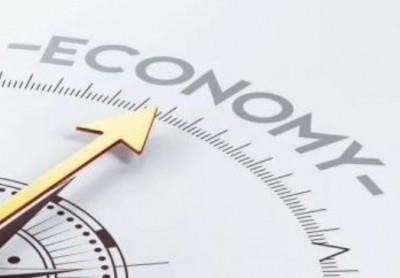India Deserves Higher Ratings, BBB Ratings Acknowledge Only Macroeconomic Strength: Report
"As compared to BBB and even A-rated peers, India's growth trajectory, fiscal consolidation, external resilience, banking stability, and institutional credibility present a much stronger macro profile," MP Financial Advisory Services said in its report.
According to the findings, these pillars suggest that India's creditworthiness is already more consistent with stronger-rated sovereigns, raising the debate on whether the current BBB level reflects the country's true credit standing.
“When assessed across growth, debt sustainability, external resilience, banking stability, and institutional credibility, India's fundamentals not only compare favourably but, in several respects, outperform higher-rated economies," said Mahendra Patil, Founder and Managing Partner, MP Financial Advisory Services LLP.
The current BBB rating, therefore, materially understates India's true credit strength, which already aligns more closely with higher-rated peers across multiple dimensions, he added.
Over the past decade, India has consistently delivered 6–7 per cent real GDP growth, a level unmatched by most BBB-rated and even several A-rated peers, whose long-run average growth typically falls between 2-3 per cent.
The nation's economic resilience has been tested through multiple global shocks - the 2008 Global Financial Crisis, the 2013 taper tantrum, the COVID-19 pandemic, and repeated commodity price surges - during which advanced peers often slipped into stagnation while India maintained positive momentum.
India's debt-to-GDP ratio, at 81–82 per cent, is elevated but stable, with the IMF projecting a gradual decline to 78 per cent by FY2029.
This compares favourably with many higher-rated sovereigns: Italy (135 per cent), France (110 per cent), Belgium (104 per cent), and Japan (235 per cent). Even Germany (63 per cent ) and Canada (69 per cent), though lower on headline debt, face much weaker growth trajectories, making their debt ratios more persistent.
The report noted that India's nominal GDP growth of 10–11 per cent significantly outpaces its effective interest cost of 6–7 per cent, creating a favourable“growth–interest rate” differential.
This positive gap enables India to gradually 'grow out of debt,' as robust growth drives down debt ratios over time. In contrast, advanced economies such as Italy, France, and Japan face the opposite challenge with sluggish growth, according to the report.
"India is increasingly channelling fiscal resources into capital expenditure. The capex has risen from 12 per cent of the Union budget in FY2019 to 23 per cent in FY2025," the report said.

Legal Disclaimer:
MENAFN provides the
information “as is” without warranty of any kind. We do not accept
any responsibility or liability for the accuracy, content, images,
videos, licenses, completeness, legality, or reliability of the information
contained in this article. If you have any complaints or copyright
issues related to this article, kindly contact the provider above.
Most popular stories
Market Research

- Japan Buy Now Pay Later Market Size To Surpass USD 145.5 Billion By 2033 CAGR Of 22.23%
- BTCC Summer Festival 2025 Unites Japan's Web3 Community
- GCL Subsidiary, 2Game Digital, Partners With Kucoin Pay To Accept Secure Crypto Payments In Real Time
- Smart Indoor Gardens Market Growth: Size, Trends, And Forecast 20252033
- Nutritional Bar Market Size To Expand At A CAGR Of 3.5% During 2025-2033
- Pluscapital Advisor Empowers Traders To Master Global Markets Around The Clock






















Comments
No comment